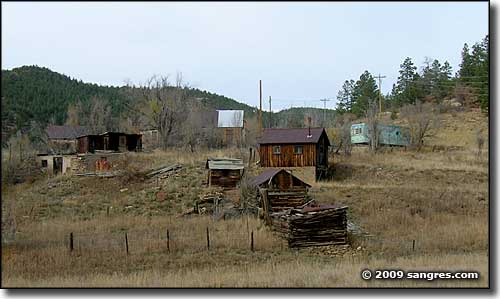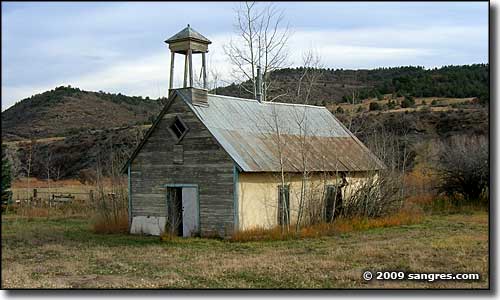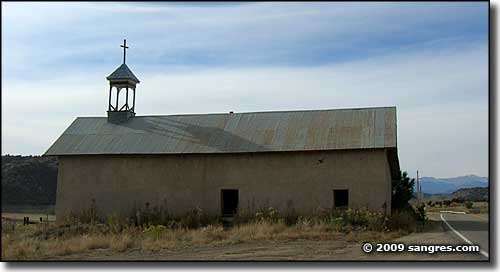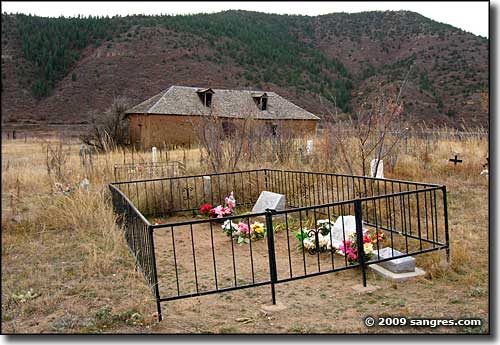


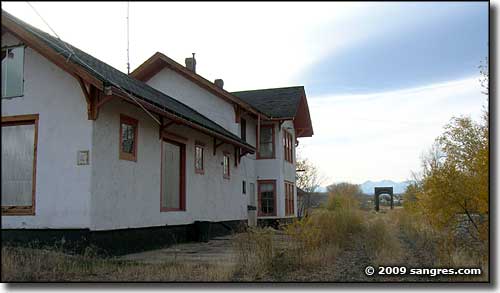
In 1862, Felipe Baca returned to the Purgatoire River Valley from Mora, New Mexico with his family and 12 other families. Some of the folks decided to stay where Trinidad is now (near the confluence of Gallinas Creek and the Purgatoire River). Most moved upriver on the Purgatoire, some settling as much as 35 miles back in near the edge of the Sangre de Cristo Mountains.
In those days, most families picked their spot and set about building a "plaza:" a central open area with buildings on four sides for protection from animals and from Indian attacks (the Utes and Apaches were still quite active around here in those days). Most of the plazas were along the main stem of the Purgatoire but Parras Plaza was built a couple miles up the North Fork of the Purgatoire while Torres was built about 10 miles up the South Fork of the Purgatoire.
The main canyon of the Purgatoire narrowed west of the confluence with the North Fork (west of Vigil Plaza) and that area wasn't settled for a few years after the Mora settlers arrived. Most of the Mora settlers built a church as part of the "walls" around their plaza. Today, in many places, the church is about all that still stands of the original constructions.
The Stonewall area was explored, fished and hunted often, but it waited for folks like Richard and Marion Sloan Russell to settle there. Richard Russell was a retired US Army Lieutenant from Fort Union and a good friend of Kit Carson. Carson often stayed at Marion's mother's inn in Santa Fe and usually referred to Marion as "Maid Marion." Carson introduced the two and they were married not long after. They honeymooned in Stonewall and ended up settling there. Everything went well for them until 1888 when gunmen from the Maxwell Land Grant decided that they hadn't paid for the property they were living on (a regular ruse used by new owners of the Maxwell to get folks to pay for the same land again and again and again). Shooting started and then a truce was called. Richard Russell was a leader of the Stonewall settlers and he walked forward under a white flag to negotiate with the gunmen. The company enforcers killed him instead, figuring if they took out the ringleader, the rest would back off. It ended up in court and Marion had to pay for her land yet one more time.
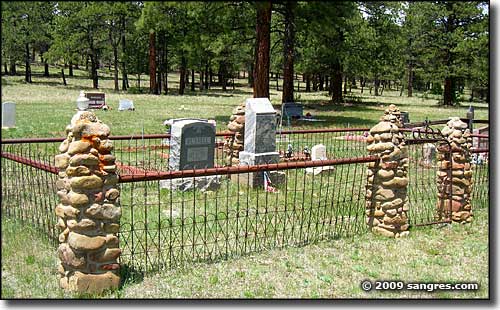
The last one to pull this particular stunt was John D. Rockefeller after he came into possession of Colorado Fuel & Iron (headquartered in Pueblo). Through the "good" services he bought (under the table, of course) from the Colorado Legislature, Rockefeller also came into possession of the Colorado section of the Maxwell Land Grant. Officials of CF&I once again challenged the people living on the land to produce their title deeds and prove that they had paid the right people the right amount of money for the land they were living on. Those who couldn't produce the "correct" paperwork were forced to buy the land once again or move out. But this time, those who paid got title deeds that excluded any mineral ownership they may have had previously. Some of the descendants of the families who lived in this area in those days are still fighting in court over this, and some have already won back their mineral ownership - a very valuable thing in these days of extensive coalbed methane production throughout the whole of the Raton Basin.
Over time, other settlements appeared in the Purgatoire Valley. These were mostly coal camps, although Weston doubled as a center for shipping timber that was cut in Wet Canyon and brought down to the railroad depot there. Weston was built near the confluence of the main stem of the Purgatoire and its South Fork. This is where the tracks from Torres and Tercio came up through the valley of the South Fork and then turned east to Trinidad. In 1951, the tracks to Tercio were picked up and moved over to run up the main stem of the Purgatoire to the Allen Mine, between Weston and Stonewall.
